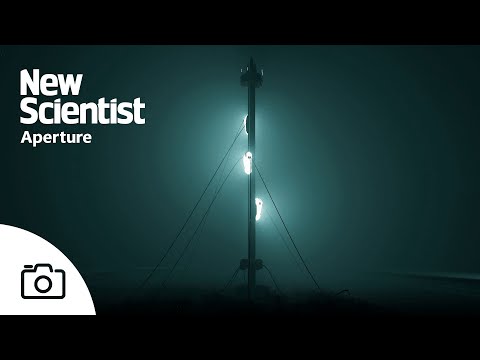Philippe Parreno wants to take visitors to his latest exhibition, Voices at Munich’s Haus Der Kunst, on a journey into the unknown. “There is no dramatic arc produced by Netflix where you just have to sit, shut up and enjoy the show,” the artist explains of the large, multi-room space filled with moving light sculptures, heat lamps, speaker arrays, dancers and film screens. Instead, for Parreno, traversing the rooms is a process of composing your own journey. “You explore time in space with your own curiosity.”
That’s not to say the show is without structure or meaning. Rather, the multiple works operate as discreet objects that make up an organic whole around a central film called El Almendral, which shows a remote plot of land the artist has purchased in southern Spain. The land was the filming location for 1960s spaghetti Westerns, acting as a proxy for the American wilderness, and represents human intervention in nature. In recent years the region has faced severe drought. “How today, with what we are facing and the ways climate change is changing the world,” says Parreno, “do we address the landscape?”
To answer this question, he creates a dialogue between the physical space in Spain and the gallery space in Munich via live-streamed cameras and a suite of sensors whose live data feed into a central computer that activates all of the exhibits in the gallery. This is narrated in an AI created language voiced by Susanne Daubner, one of Germany’s leading newscasters. “She gave her voice to the landscape,” says Parreno. Alongside his collaborator Nicolas Becker, Parreno recorded Daubner’s voice and fed it into an AI model of their own design to create a new and evolving language called ∂A, which now fills the space. “The AI is a tool to create unpredictability,” says Becker, “we like to play with different parameters to go in a very specific, strange place where you can recognise the voice, but can’t understand it.”
While Parreno talks around ideas of personhood, climate change, truth, cultural iconography, language, meaning and evolution, he wants the viewer to find their own path through the space. “There’s no beginning and no end to it,” he says, “I was intrigued to see how now we can look back at this space, you know, and now this space can look back at us.”
Advertisement
Philippe Parreno. Voices. is on at Haus Der Kunst in Munich until 25 May 2025
On 23 December we corrected the spelling of Philippe Parreno’s name.
Topics:
